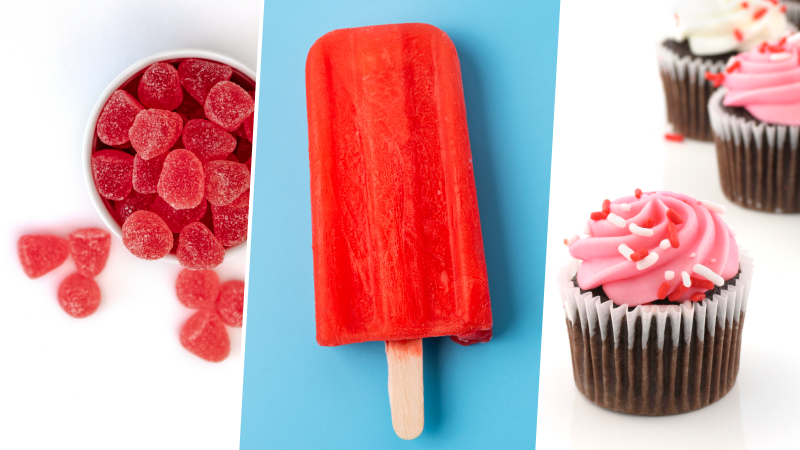
Why Red Dye #3 Is Still In Your Food—And What You Can Do About It
BALA BITES: BYE BYE RED DYE #3
This month, the FDA revoked its approval for Red Dye #3.
Red Dye #3 is a controversial food additive still found in many U.S. products despite it being a banned ingredient in other countries.
Red Dye #3 is a synthetic colorant found in everything from candies to medications.
So is it a win for public health?
Sure...but the reality is this ban is a glaring example of why trust in health agencies continues to erode.
HOW OTHER COUNTRIES HANDLE RED DYE #3
Red Dye #3 is a restricted ingredient or is an outright banned ingredient in numerous countries for decades.
Europe, Japan, Australia, and China have all acted sooner and more decisively, with stricter regulations or full prohibitions.
Meanwhile, the FDA allowed it to remain in our food supply despite banning it from cosmetics 35 years ago due to cancer concerns.
Food safety advocates point to other countries having banned Red Dye #3 as a primary reason why Red Dye #3 should no longer be in our food supply.
LINKS TO SERIOUS HEALTH RISKS
This dye isn’t just a superficial ingredient—it has been linked to serious health risks.
Studies indicate it can disrupt thyroid hormones, increase oxidative stress that damages brain cells, and potentially weaken the immune system.
Research links Red Dye #3 to hyperactivity in children and potential long-term health risks.
Yet, American consumers have been exposed to it in popular products like Brach’s Candy Corn, Nesquik Strawberry Milk, maraschino cherries, and even gummy vitamins.
WHY DID THE US DRAG ITS FEET ON RED DYE #3
We can thank industry pressure as US health agencies are known to be highly susceptible to industry pushback.
With the ban not effective until January 2027, here's what you can do in the meantime to protect yourself and your family:
- Read labels and avoid products listing Red Dye #3 or erythrosine
- Choose foods that rely on natural food dyes like those from berries or beets
- Favor whole, minimally processed foods

WHAT'S NEXT
With Red Dye #3 on its way out, what will go in its place?
Likely red dye 40, which has it's own set of controversies so you might as well screen your products for it.
Common foods with Red Dye 40 include candies like Skittles, M&M's, Gummy bears, and Jolly Ranchers. Drinks like Gatorade (red flavors). Snacks like Doritos (some varieties like Flamin' Hot). Cereals like Froot Loops and condiments like ketchup.
Bottom line is the ban is good news but it's nothing to celebrate.
The fact it took so long to ban Red Dye #3 shows everyone where our health agencies' real priorities are.
FURTHER READING
Want more insights like this? Sign up for Bala Bites and get a curated compilation of insights delivered every other week to your inbox
Changes at the FDA. How closing the GRAS loophole will affect you
Intrigued by personalized nutrition? Begin with the Symptom Solver Quiz